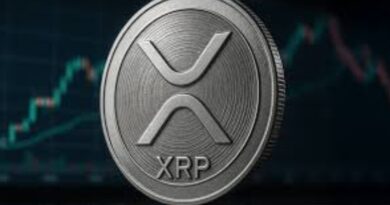Kyrgyzstan Launches Digital Som Central Bank Digital Currency Law
Big changes are coming to money in Kyrgyzstan. The country has just taken a major step toward joining the digital finance world by introducing the Digital Som, its own state-backed digital currency. But what does this mean for everyday people, and why is it happening now?
If you’re hearing about central bank digital currencies (CBDCs) for the first time, don’t worry. We’ll break it all down in simple terms so you can understand how it may impact you – whether you’re living in Kyrgyzstan or just interested in where money is headed around the world.
What Is the Digital Som?
The Digital Som is Kyrgyzstan’s version of a central bank digital currency (CBDC). That’s basically a government-controlled version of digital cash. Think of it as your regular national currency – but instead of being printed as paper or minted into coins, it exists purely in digital form.
Unlike cryptocurrencies like Bitcoin or Ethereum, it’s not decentralized. It’s managed and backed by the National Bank of the Kyrgyz Republic (NBKR), which means it’s fully regulated and supervised just like your banknotes today.
Why Is Kyrgyzstan Doing This Now?
On May 17, President Sadyr Japarov officially signed a new law that sets the foundation for introducing the Digital Som. The law goes into effect in mid-2024, giving the country some time to set things up the right way.
So why now? Here are a few reasons Kyrgyzstan is moving in this direction:
- Modernizing the country’s financial system
- Providing more secure and efficient payment methods
- Reducing the cost of printing paper money
- Combating financial crimes like money laundering
- Increasing access to banking for those in remote areas
In short, it’s about keeping up with where the world is headed – and building a more efficient system for everyone.
How Will the Digital Som Work?
While the finer details are still being worked out, we already know that the Digital Som will be issued by the central bank, which means it’ll have the same value as the paper Som in your wallet.
Imagine this: you’re buying groceries at your local market. Instead of paying with cash or a card, you could scan a code and pay instantly using your digital currency from an app. Easy, right?
Let’s simplify it further:
- The Central Bank creates digital soms and puts them into authorized wallets
- People and businesses can use those wallets to buy, sell, receive, or store funds
- The amount you hold is backed 1:1 with the national currency, meaning no surprises
It’s like using mobile money – but officially supported and guaranteed by your country’s top financial institution.
What Sets the Digital Som Apart?
Many countries are exploring digital currencies, but each does it a bit differently. What makes Kyrgyzstan’s approach unique is how closely the National Bank remains in control.
Some countries allow private banks or tech companies to run parts of the system. Here, it’s all managed directly by the NBKR. This central role means tighter control, closer monitoring, and likely, higher security levels.
Extra features being considered include:
- Built-in anti-money laundering checks
- Offline use for remote areas without stable internet
- Smart contract capabilities for automated payments
While we haven’t seen a full demo yet, the law gives the NBKR full power to launch pilot tests, engage with users, and tweak the system over time.
How Will It Affect Everyday Life?
If you’re someone who already uses online banking or e-wallets, switching to the Digital Som may feel familiar. But there will be some key changes that could impact how you spend, save, and manage money.
Here’s what you might notice:
- Faster Transactions: No need to wait for bank confirmations – payments can happen instantly.
- Lower Fees: Digital systems often cut out middlemen, reducing costs.
- Better Access: Even without a traditional bank account, you could store and use digital funds from your phone.
- Transparent Tracking: Useful for budgeting or business transactions, as every payment has a traceable record.
Of course, this also raises questions—will people still choose to use cash? Will smaller businesses be ready to accept digital payments? Will banking apps be easy enough for older users?
For now, Kyrgyz policymakers are working closely with banks, tech companies, and citizens to make sure the rollout is smart and fair.
What Does This Mean for the Future of Money?
As countries like China and Nigeria have already launched their CBDCs, and others like the EU continue testing theirs, Kyrgyzstan is showing it doesn’t want to be left behind.
By creating its own digital currency, it sends a clear signal: we believe the future of money is digital.
This trend may reshape how people across the globe access financial services. For some, that might mean more inclusion. For others, it might bring challenges around privacy and freedom of choice.
Let’s ask a few important questions:
- Will digital currencies replace paper money altogether?
- How can governments balance innovation with security and privacy?
- Are people ready for such a big shift in how money works?
Only time will tell. But what’s clear is that the shift is already happening – and Kyrgyzstan is officially part of that wave.
What Should You Do Now?
Even if you’re not in Kyrgyzstan, this move could impact how you understand and use money in the future. Here’s what you can do:
- Stay informed: Keep an eye on how your own country is approaching digital currency.
- Try digital tools: Start using mobile wallets or online banking features if you haven’t already.
- Ask questions: Talk to your bank or local officials about how digital money might work for your needs.
- Protect your information: Learn about digital security and safe online practices.
Final Thoughts
Kyrgyzstan’s bold move to launch the Digital Som shows just how fast the financial world is changing. With the support of the National Bank and clear legislation guiding the way, the country seems ready to explore this new frontier.
Whether you’re a student, small business owner, or just curious about the future of money, it’s worth paying attention to these changes. The way you spend, save, and send money could look very different in just a few years.
Would you trust a digital version of your everyday money? The answer might not be clear yet, but one thing is certain: change is coming.









